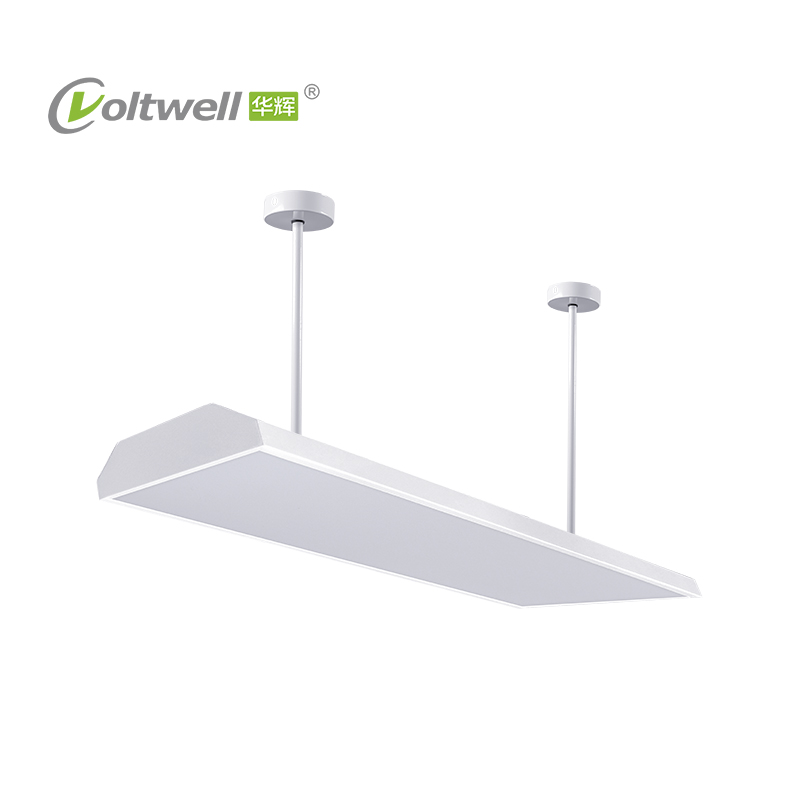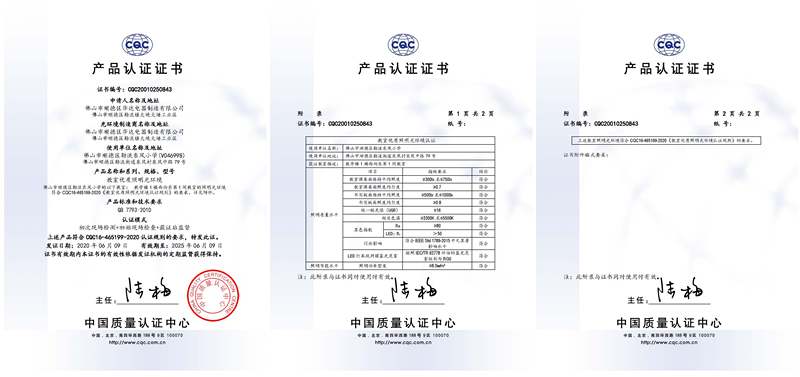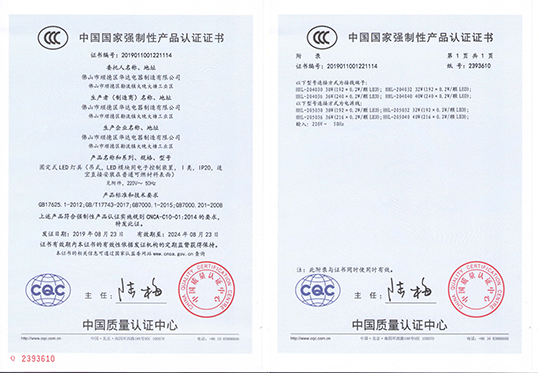
When the fluorescent lamp was first installed, the light was dazzling, but the overall feeling was very dim and the light was uneven. And the fluorescent lamp has white light and more blue light components, which is harmful to blue light; The longer the lamp is turned on, the greater the attenuation of phosphor in the light source. After the lamp is used for a long time, both ends of the lamp become black, and the stroboscopic is also serious. When reading and writing in such an environment for a long time, the visual system is adjusted frequently, which is easy to cause dizziness, dizziness and even myopia.
To select the classroom eye protection lamp that can really help students improve their eyesight, it must comply with the national classroom lighting standards, and meet the requirements of anti-glare, anti-stroboscopic, uniform illumination, comfortable color temperature, high color rendering, and anti-blue light.
As a health promoter of campus lighting, Huahui Lighting is one of the first units to meet the standard of high-quality lighting environment in classrooms in South China, and also the "Top Ten Educational Lighting Brands" in China's lighting industry in 2020. It is necessary to strictly control the color temperature, glare, blue light, illuminance and other issues in educational lighting, so as to avoid the harm of poor lighting to students' vision health, The following factors should be paid attention to when selecting high-quality, healthy and energy-saving classroom eye protection lamps:
1、 Luminous flux (Lumen) and illuminance (Lux)
Luminous flux is the amount of light emitted by the light source, and illuminance is the luminous flux of the light source on the unit area, so 1Lux=1Lm/m2. High illuminance means that the amount of light falling on the surface of the object is large (high lumen number). There is a great difference between the average illumination of 300lx and the average illumination of 400lx. The average illumination standard of the classroom eye-protection lamp in China must be ≥ 300lx, while the average illumination of the LED eye-protection classroom lamp produced by Huahui Lighting is as high as 418lx, and the illumination uniformity is 0.8.
2、 Lighting rang
The range of illumination is the extent to which the light source can illuminate. Some eye-protection classroom lights can only illuminate a range of about 50cm, while others can illuminate the entire desktop.
3、 Color temperature
Warm yellow light? Cold white light? It is the color temperature we often hear. We have different requirements for color temperature under different use scenarios and time periods. Warm yellow light is suitable for leisure, reading and bedtime; Cold white light is suitable for concentrating on work and study. The classroom lighting lamps produced by Huahui Lighting - led eye-protection classroom lamp and led eye-protection blackboard lamp meet the national standards, pass the 3C certification, and the color temperature is stable at 5000K, comfortable and soft, which is conducive to the vision health and learning work of teachers and students.
4、 Color rendering index (CRI)
The color rendering index is the level of the light source's visual perception of the object under the sun. The higher the color rendering, the stronger the ability to restore the color of the object, and the easier it is for the human eye to distinguish the color of the object. The color rendering index of classroom lighting lamps produced by Huahui is more than 90, which is far higher than the 80 specified in the national standard.
5、 Blue light and hazard level
Blue light is not all harmful blue light. What is really harmful is short-wave blue light within 400-440/450 nm. Blue light between 450-500 nm has a role in regulating biological rhythms. Sleep, mood, memory, etc. are related to it, which is beneficial to the human body. So is short-wave blue light bound to cause damage to the human eye? This is related to the exposure intensity and exposure time. When the illumination reaches a certain level and lasts for more than two hours, it is possible to damage the retina.
In fact, LED lamps have blue light, but if the lamps can reduce the blue light to the non-hazardous level, there is no need to worry about the harm of blue light. Therefore, for the potential hazard of blue light of LED lamps, IEC63471 formulated by the International Electrotechnical Commission (IEC) classifies the safety level of the blue light hazard of LED light source products, with a total of four levels: RG0, RG1, RG2 and RG3. Among them, RG0 is exempted, which means that the lamp does not cause any harm under the limit conditions defined in the standard (the included blue light hazard is defined as not causing harm to the retina within 10000s).
6、 Stroboscopic
Stroboscopic refers to the fluctuation of luminous flux of electric light source at a certain frequency. Stroboscopic detection is very simple. When we use the camera of the mobile phone to aim at an electrical screen, a bright line will move from the bottom of the screen to the top, and then appear from the bottom. In this way, we will feel that the image is flickering, that is, stroboscopic. Even if we can't see its flicker with the naked eye, it will cause great damage to our vision. So we must choose the classroom lighting without stroboscopic!
7、 Glare
Like blue light, glare also exists in many places of our daily life, such as lights, spotlights, etc. The uncomfortable light that makes people feel dazzling is called glare. Some glare belongs to adaptive glare, which refers to the loss of vision after people move from dark places to bright places. Generally, it can be recovered after a short adaptation time. So how to avoid glare? The most effective way is to hide the light. If there is no direct light in the sight range, the glare will be naturally suppressed.
After summarizing seven important parameters, we find that if a lighting product has outstanding advantages in key indicators such as luminous flux, illuminance, lighting range, color temperature, color rendering index, blue light, stroboscopic and glare, then the concept of "eye protection lamp" is no longer an IQ tax! The shopping guide can be summarized as follows:
1. The higher the luminous flux, the better. The illumination suitable for reading is between 300-500lux
2. The larger the lighting range, the better
3. Color temperature is between 3300 and 5500K
4. Color rendering index is greater than 80
5. The blue light level is RG0
6. No strobe
7. Extremely low glare value
So, there is a classroom eye protection lamp, with a luminous flux of 3268 lumen, an illuminance of 418 lux (it is easy to choose the appropriate range of illumination for the eyes), a comfortable color temperature of 5000 k, a color rendering index of 91.3 Ra, and a blue light of RG0 level, no stroboscopic, and extremely low glare value. Do you feel excited?
△华辉直发光led护眼教室灯
△华辉侧发光led护眼教室灯
△华辉led护眼黑板灯

△华辉led底发光教室灯005款

△华辉led底发光教室灯006款
附:华辉照明获得"教室优质照明光环境首批达标单位"

附:华辉led教室灯和led黑板灯CCC证书↓

附:教育装备行业协会会员证书↓

服务热线:0757-25539380
联系QQ:2392711759、2755796541、2736621813
Copyright © 2018 FOSHAN SHUNDE HUADA ELECTRICAL MANUFACTURE COMPANY LIMITED | All Rights Reserved Design by gdhuada.com